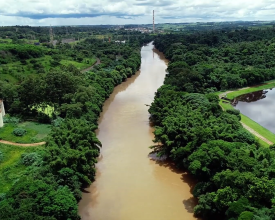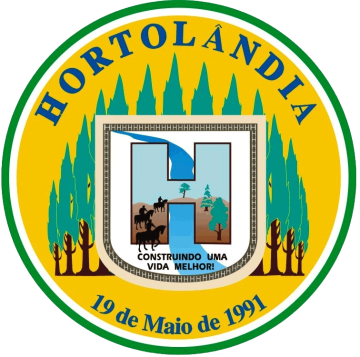
Implantación del Proyecto de Revitalización del Ribeirão Quilombo y sus Áreas de Protección de la Planicie de Inundación (Cuenca del PCJ)

La cuenca del río Ribeirão Quilombo abarca seis importantes municipios que albergan aproximadamente 2.072.000 habitantes, a saber: Americana, Nova Odessa, Sumaré, Hortolândia y parte de los municipios de Paulínia y Campinas. El Ribeirão Quilombo presenta aguas altamente contaminadas debido a los vertidos de aguas residuales domésticas e industriales, no siendo indicado para uso urbano y requiriendo acciones para su descontaminación.
A recuperação das águas e das áreas de proteção da llanura de inundação do Ribeirão Quilombo foi realizada através da implementação do Grupo de Revitalização, através de macrodrenagem, recuperação florestal, saneamento de qualidade, e significativa mobilização regional em defesa do tema, com a adesão da comunidade local, municípios e entidades.
Em dois anos de operação, foram executadas várias ações estruturais e não estruturais, contribuindo para a recuperação do Ribeirão Quilombo e das suas áreas de proteção ambiental.
Contexto
Défis à relever
Los principales retos encontrados por el Consórcio PCJ para promover la revitalización del Ribeirão Quilombo fueron:
- Falta de información y planificación;
- Poca integración entre los distintos municipios y organismos en materia de saneamiento y medio ambiente;
- Mala calidad del agua y falta de bosques ribereños;
- Recaudación de fondos para llevar a cabo las acciones de revitalización necesarias.
Ubicación
Procesar
Resumen del proceso
Para la ejecución de las acciones de revitalización del Ribeirão Quilombo, inicialmente fue necesario realizar el diagnóstico de la Cuenca del Ribeirão Quilombo. A partir de este levantamiento, fue posible identificar las acciones necesarias que cada municipio debería realizar para mejorar la calidad del agua del Ribeirão Quilombo. Después de sensibilizar a la comunidad regional sobre la importancia de la revitalización de los cursos de agua a través de la aplicación de políticas públicas capaces de involucrar a los gestores, entidades de comando y control, comunidad, socios y representantes de los gobiernos municipales, lo que llevó a la creación del "Grupo de Revitalización del Ribeirão Quilombo", foi firmada uma Pactuação dos envolvidos na promoção de ações de revitalização do Ribeirão Quilombo, indicando o Cronograma de ações a serem tomadas por cada um dos municípios para atingir as demandas existentes nas áreas de macrodrenagem, reforestaçãoy saneamiento.
Bloques de construcción
Diagnóstico y plan de acción
El Diagnóstico de la Subcuenca del Ribeirão Quilombo, incluyendo informaciones sobre la situación del macrodrenaje, recuperación forestal y calidad del saneamiento ambiental de la región (tres aspectos importantes para la recuperación de la Subcuenca), indicando las acciones a ser realizadas por cada uno de los municipios involucrados en el proyecto de revitalización del Ribeirão. A partir de la caracterización de los escenarios de baja disponibilidad hídrica existentes, además de la creciente dificultad de obtención de nuevas fuentes para abastecer la creciente demanda, se realizaron estudios para obtener un diagnóstico de la situación actual de las demandas y acciones de recuperación de la Subcuenca del Ribeirão Quilombo, para la definición de alternativas futuras que posibiliten la ampliación de la capacidad hídrica de los sistemas productores de agua, permitiendo la recuperación de la cantidad y calidad del agua de la quebrada en los seis municipios involucrados.
Factores facilitadores
Para obter o Diagnostico da Bacia do Quilombo Ribeirão, foi necessário relevar vários estudos ambientais na região, de forma a filtrar os mais relevantes do ponto de vista para a revitalização de um rio. Foram selecionados dados relativos à situação do macrodrenho, recuperação florestal e qualidade do saneamento ambiental na região. Se identificaron las actuaciones necesarias para cada municipio de la cuenca.
Lección aprendida
Con la conclusión y consolidación del Diagnóstico de la Cuenca del Ribeirão Quilombo, fue posible identificar, cuantificar y presentar a los miembros del Grupo y a los Municipios involucrados cuáles son las demandas a ser alcanzadas en el ámbito de la revitalización del Ribeirão Quilombo.
Dentro do tema do macrodrenaje foi possível verificar os reservatórios recomendados para controlo de inundações na bacia do Ribeirão Quilombo que ainda não foram executados. Como si presentaran problemas relacionados con el uso y ocupación del suelo y el costo estimado para la ejecución de las obras.
No que respeita ao tema da recuperação florestal, o diagnóstico feito aponta a necessidade de plantar até 584.763 mudas de árvores nativas na região; bem como o custo e a indicação da quota parte de cada município.
Con relación a las acciones de calidad del saneamiento ambiental de la Cuenca, el diagnóstico elaborado apuntó los municipios más críticos por el índice de tratamiento de alcantarillado generado, permitiendo identificar los puntos que más demandan inversiones para mejoría.
Concienciación y formación de un grupo de revitalización
A través de esta etapa, se buscó sensibilizar a la comunidad regional sobre la importancia de la revitalización de los cursos de agua a través de la implementación de políticas públicas eficientes capaces de involucrar a los gestores regionales, entidades de comando y control, comunidad, socios y representantes de los 6 gobiernos municipales. Esta acción resultó en la realización de Eventos y Reuniones Regionales para discutir el tema con los involucrados, permitiendo contribuciones de los socios y la creación del "Grupo de Revitalización del Ribeirão Quilombo", coordinado por el Consórcio PCJ.
Acuerdo de los implicados en la promoción de acciones de revitalización del Ribeirão Quilombo, indicando el Cronograma de Acciones a realizar por cada uno de los municipios para atender las demandas existentes en las áreas de macrodrenaje, recuperación forestal y saneamiento.
Factores facilitadores
Para a Pactuação dos agentes envolvidos na revitalização do Ribeirão Quilombo foi necessária a criação do "Grupo de Revitalização do Ribeirão Quilombo". Para a criação deste grupo, foram realizadas discussões com os governantes dos municípios envolvidos pela Subcassa do Ribeirão Quilombo, bem como com a comunidade regional, alertando-os da importância da revitalização do rio para a região. Este proceso requirió varias reuniones, coordinadas por el Consórcio PCJ, con el gobierno, las empresas de saneamiento y la sociedad civil.
Lección aprendida
Se puede destacar que después de la formación del "Grupo de Revitalización" los gobiernos municipales comenzaron a tener una mirada diferente sobre la Cuenca. Cada municipio, consciente de la importancia de la revitalización del Ribeirão Quilombo, tanto para garantizar agua de calidad para la población como para preservar la naturaleza local; pasó a invertir recursos humanos y materiales en acciones dirigidas a la recuperación y preservación del río. Para ello, los agentes de cada municipio podrían guiarse por el Diagnóstico de la Cuenca del Ribeirão Quilombo, previamente elaborado.
Impactos
A través del trabajo realizado, se formó el "Grupo de Revitalización del Ribeirão Quilombo" (abril de 2018), que a través del acuerdo entre los representantes municipales y los miembros implicados ha logrado diversas acciones destinadas a la recuperación del Ribeirão Quilombo.
Entre las acciones realizadas, destacan la construcción de un embalse de macrodrenaje y la elaboración de parques lineales en el municipio de Hortolândia. La plantación de más de 113.000 plantones de árboles a lo largo de la cuenca del Ribeirão Quilombo. Las inversiones en la modernización de la EDAR Quilombo, que tiene un tratamiento del 100% de las aguas residuales recogidas, en la ciudad de Nova Odessa. La construcción de la EDAR de Boa Vista (finalización prevista para abril de 2020), que contará con tecnología de tratamiento terciario, convirtiéndose en una Estación Productora de Agua de Reutilización (EPAR), en el municipio de Campinas. La corrección de los puntos de descarga de aguas residuales de agua dulce en Ribeirão Quilombo (13 puntos) y la reforma de modernización de la EDAR de Carioba (cuya finalización está prevista para finales de 2020), en Americana.
El Municipio de Sumaré, uno de los más críticos en la cuestión del tratamiento de aguas residuales, tiene un TAC (Término de Ajuste de Conducta) en el que la concesionaria de los servicios de saneamiento en el municipio se ha comprometido a elevar del 27% al 100% la tasa de tratamiento de aguas residuales para 2022. Además, CETESB instaló 3 nuevos puntos de control de la calidad del agua.
Beneficiarios
- Toda la población de los municipios de Americana, Nova Odessa, Sumaré, Hortolândia y parte de los municipios de Paulínia y Campinas;
- Gobiernos locales;
- Servicios de agua;
- Pescadores.









